Charles E W Bean, Diaries, AWM38 3DRL 606/259/1 - 1917 - 1927 - Part 5


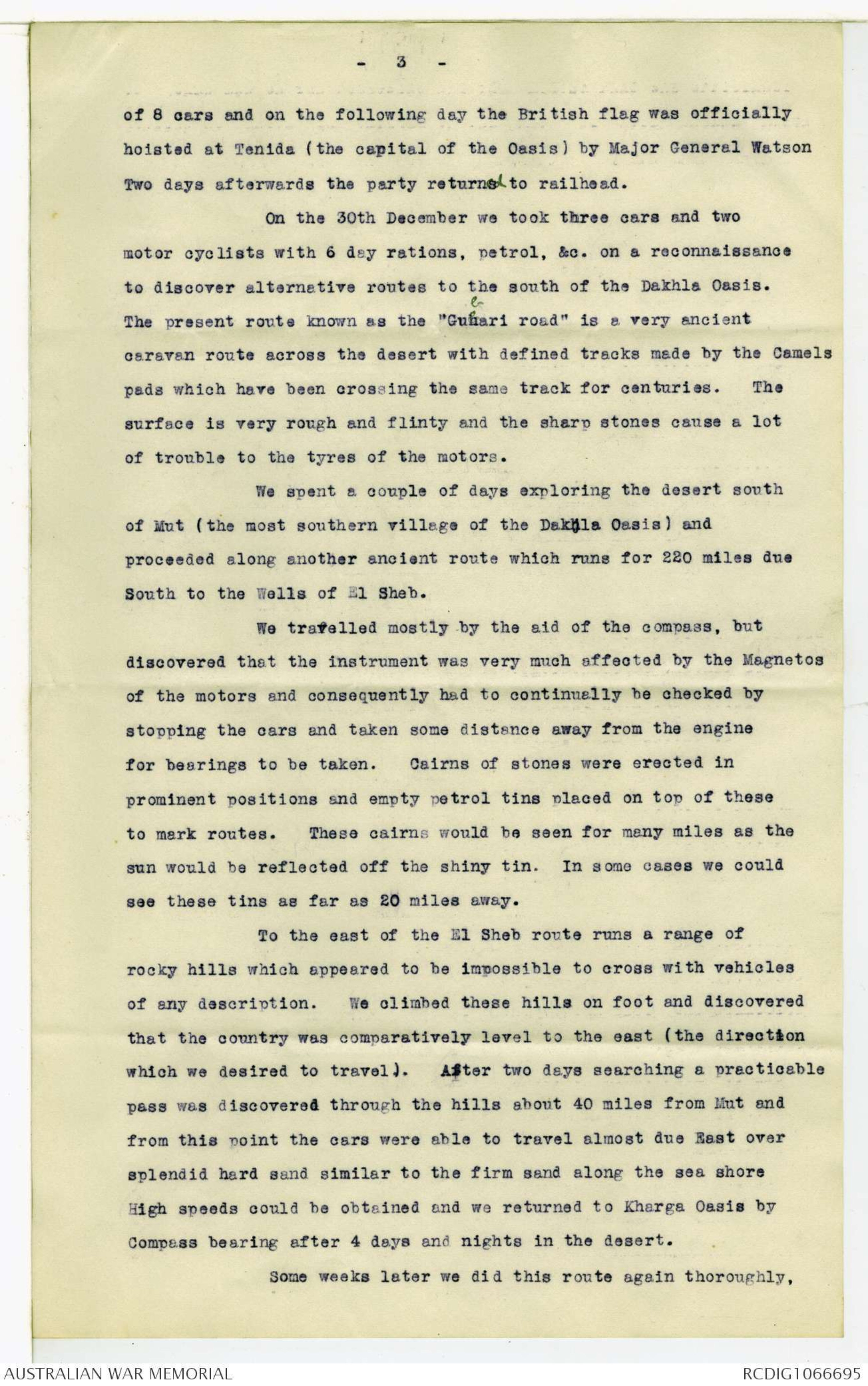
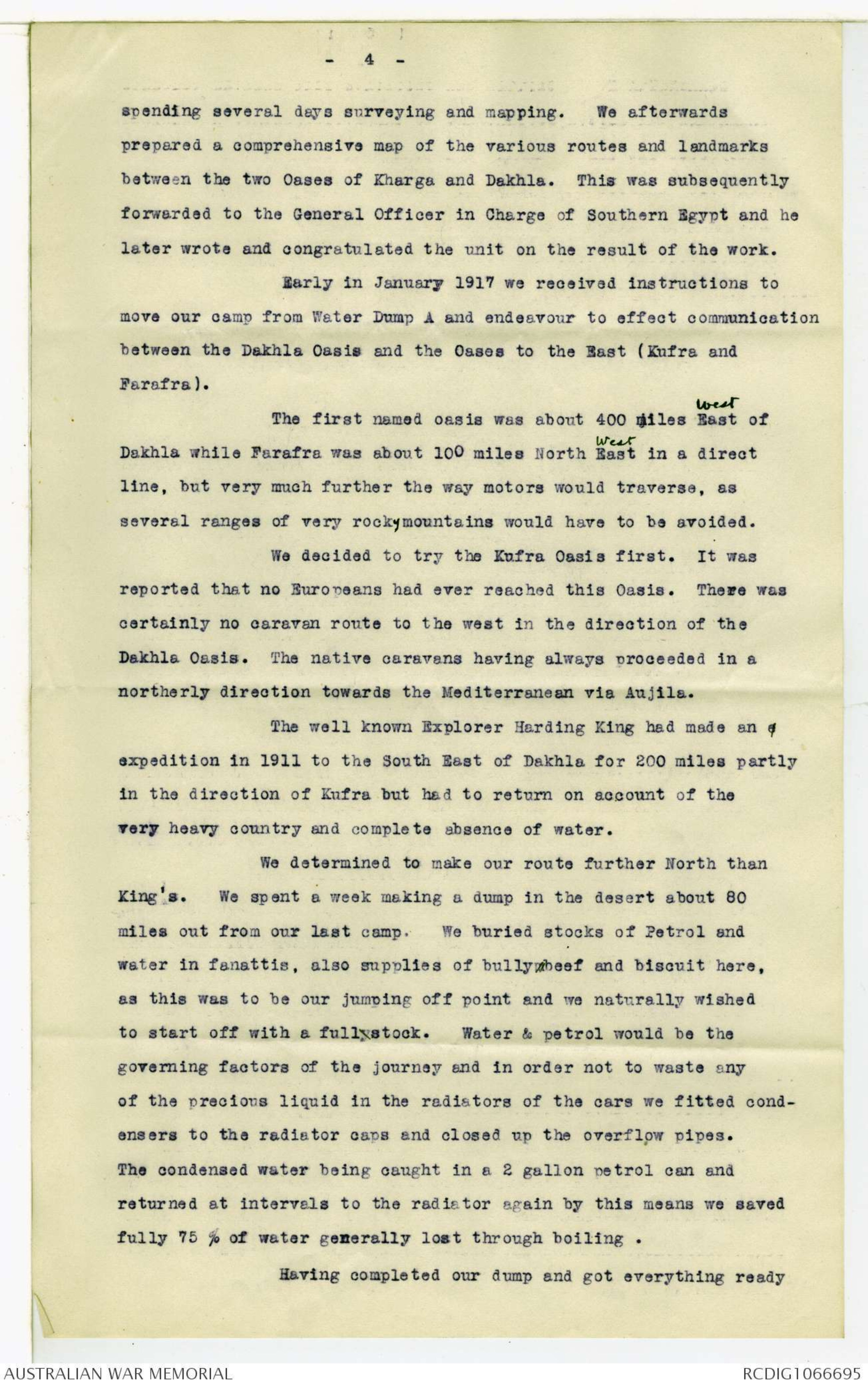
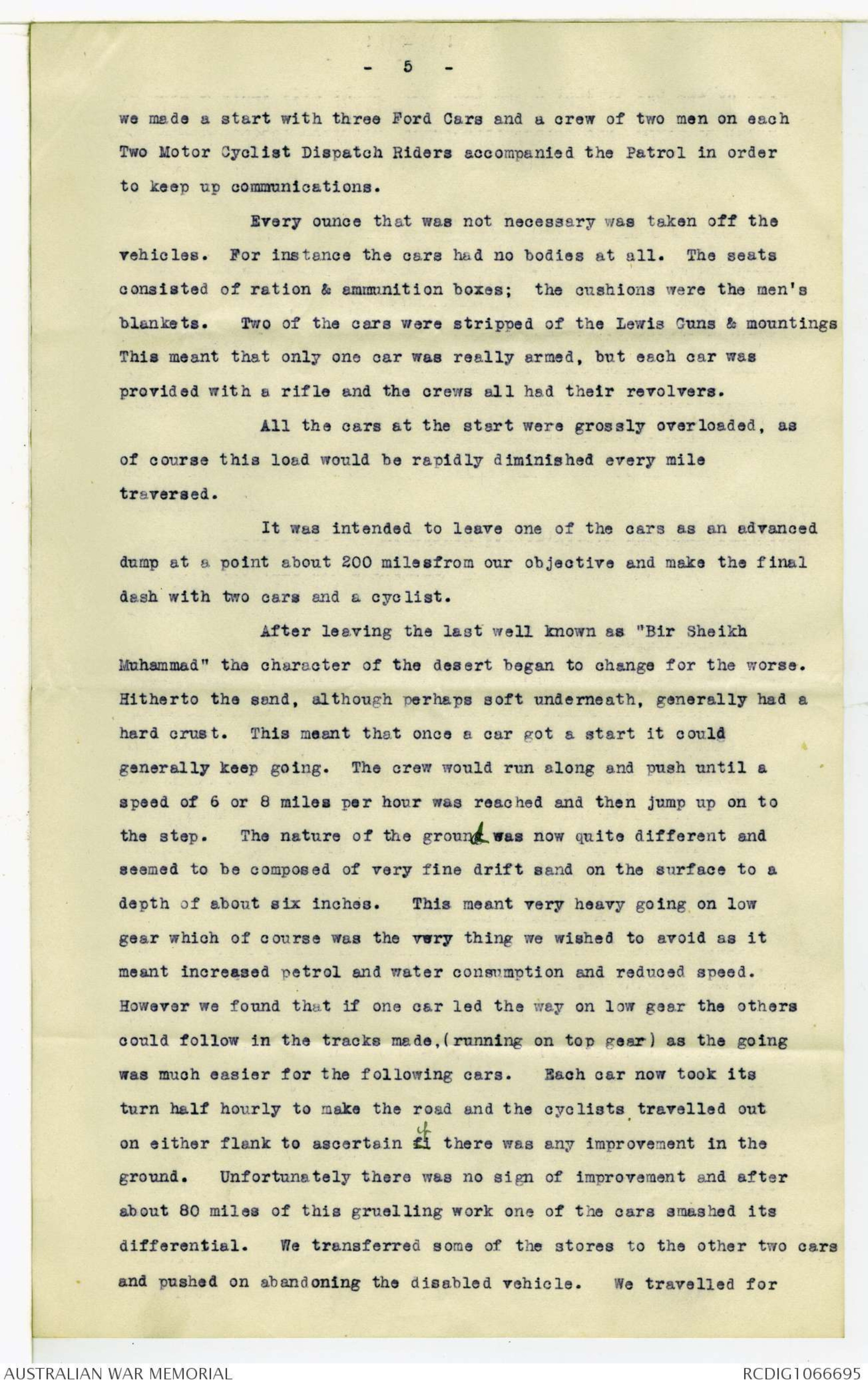
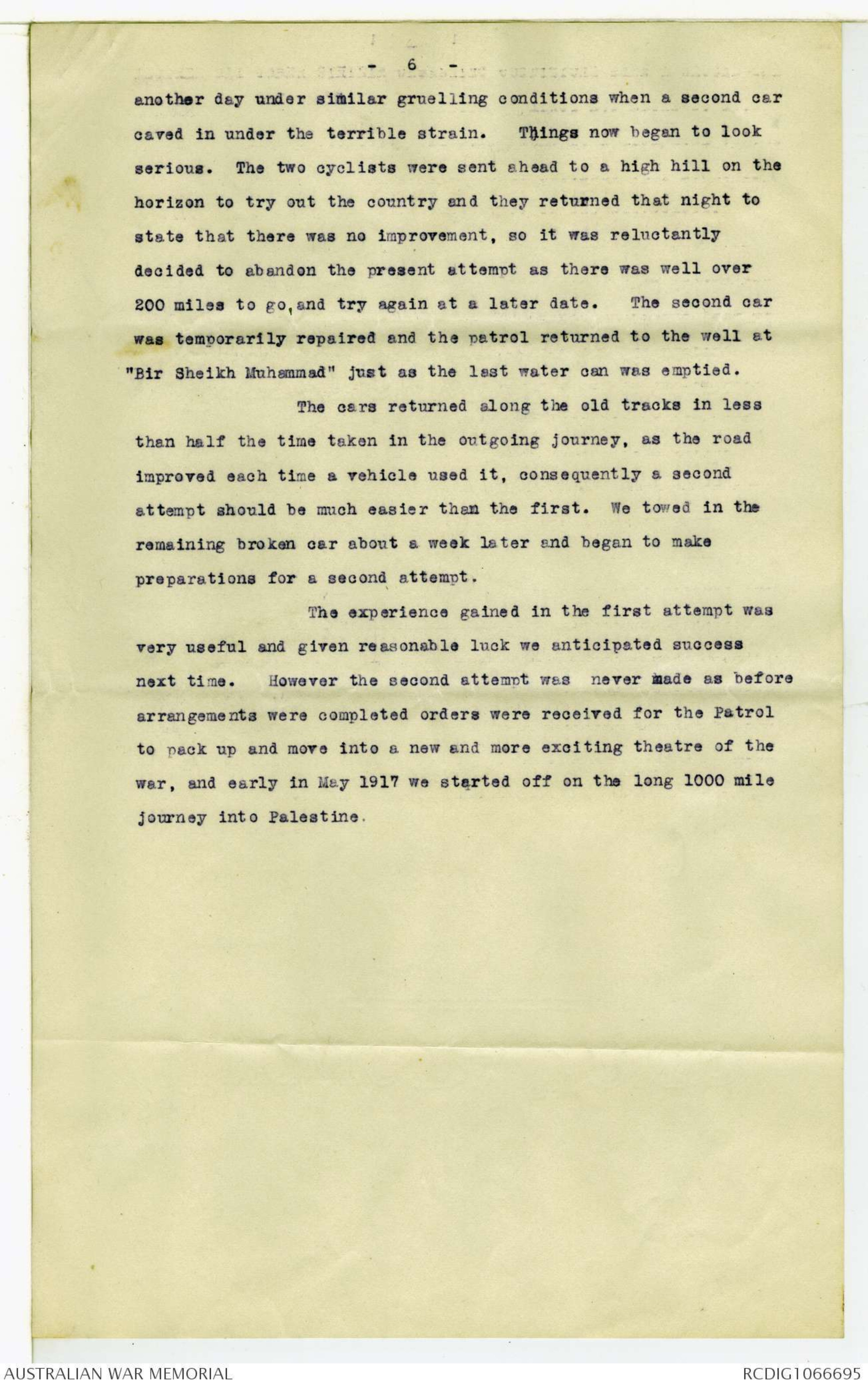

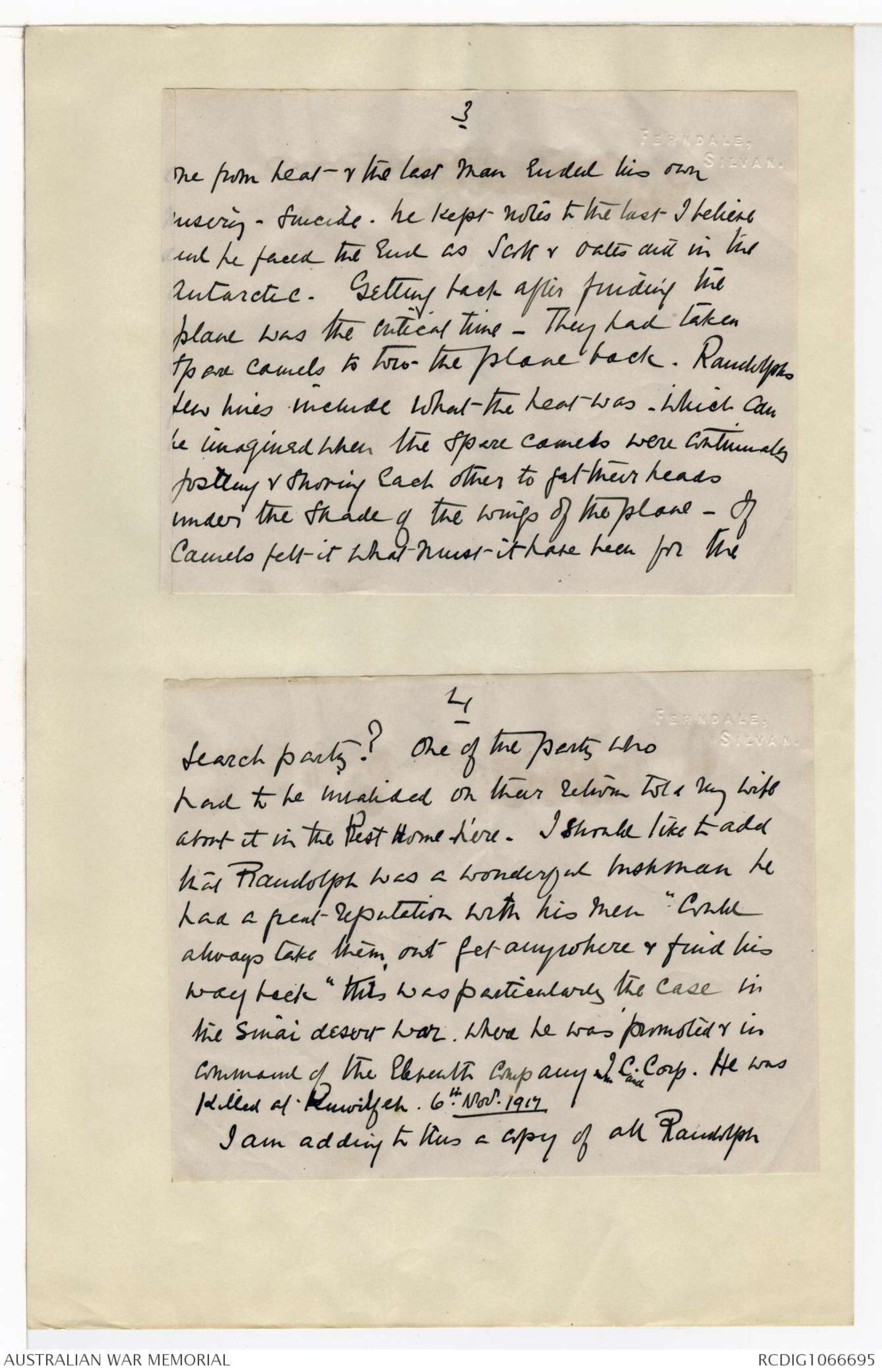

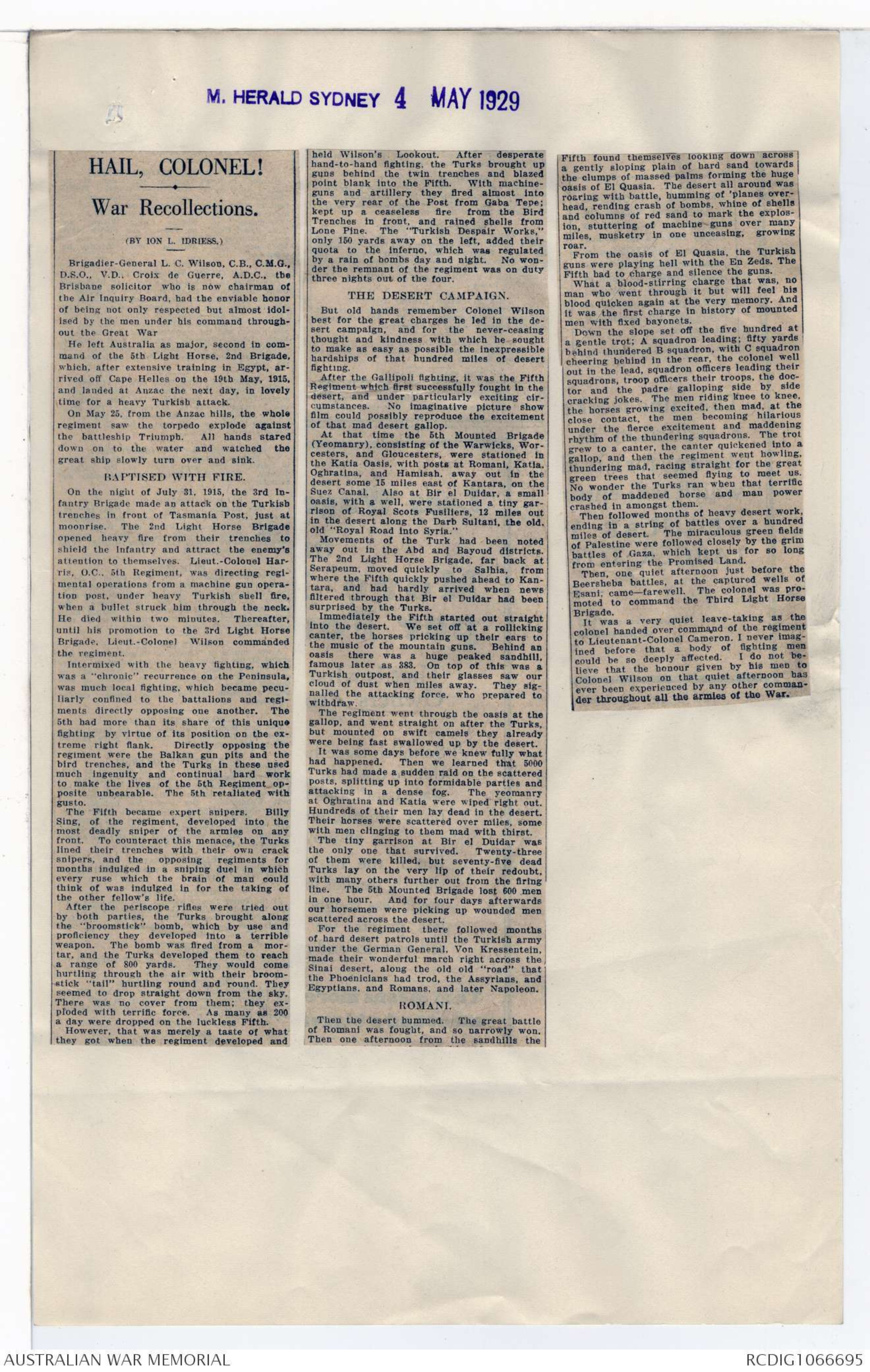
1
On August 15th 1916 The Australian Armoured Car
Battery received orders to entrain at Ismeilia for the South of
Egypt with their Armoured Cars. The battery was detrained at
Minia on the 17th and immediately took part in the operations
between this point and the Baharia Oasis along a line of
blockhouses through the Libyan Desert over one hundred miles in
length. The unit worked in conjunction with the 11th & 12th
Light Armoured Car Batteries which were imperial units, and were
equipped with Rolls Royce Armoured Cars and the new Light
Vickers Machine Guns. These vehicles were the envy of the
Australians who were equipped with a mixed fleet of cars which
while satisfactory on hard ground, gave the drivers & gunners
plenty of exertion in the soft sand of the desert. The Colt
guns with which the Australians were equipped worked well and the
unit did good practise with these. While the unit was
stationed at Minia the members suffered severely from Nile fever
and welcomed the expeditions into the desert especially when they
were detailed to relieve the garrisons occasionally in the desert
blockhouses, where the conditions were much more healthy although
of course the heat was intense.
The work of operating the heavy cars in the desert
was extremely strenuous on account of the many very soft patches
in the sand which called for skilled driving. All our drivers
were accustomed to bush driving in Australia but nevertheless
it was wonderful how the driving improved as they became more
accustomed to the desert conditions. Efforts were made to
lighten the cars by sacrificing some of the armour plating and
other more or less unnecessary parts; and twin tyres were also
devised for the rear wheels which improved the going somewhat.
The cars always worked in pairs, chiefly so that there would be
plenty of man power available when help was required in bad
country.
The chief work of the motor units was to patrol
the desert East of the Nile as it was known that the Senoussi
were established in some of the oases and were in the habit of
2
making small raids into Egypt across the Libyan Desert. These
people could only travel by camels and would perhaps average about
20 miles a day, (while of course the motors could do this distance
in an hour). This meant that if the motors patrolled on a line about
100 miles out, that information of a raid could always be obtained a
about fours days ahead.
When patrolling, the crews of the cars would keep a keen
watch on the sand for footmarks which showed up very clearly and any
fresh tracks on the desert would always be followed until the people
who made them were overhauled and interviewed. On September 6th
a couple of Imperial officers who were out with a car were surprised
in the sand dunes near the Baharia Oasis by a party of tribesmen and
were overpowered and shot. Next day a patrol car crew discovered the
bodies in the sand with their emptied revolvers alongside them.
Some days later the party of tribesmen were overhauled and captured
by one of the Light Car Patrols.
On the 3rd December orders were received by the unit for
all cars, guns and vehicles to be returned to G.H.Q. Cairo and the
unit to proceed South and take over the Ford Light Cars and Lewis
guns of a Light Car Patrol and the Australian unit was to take the
name of No. 1 Light Car Patrol. The unit proceeded South By Rail
to Oasis Junction on 6th December. Next day they travelled by a
narrow gauge Military Railway which had been built across the desert
to Kharga Oasis and the unit detrained at Rail head at what was known
as Water Dump A. A Camp was made near railhead in the sand, and
work was commenced on the Ford Cars which had been taken over in a
very dilapidated condition and which had apparently been allowed to
run almost to destruction. All ranks worked night and day for the
next couple of weeks overhauling and reconditioning the vehicles
also in practising on the new Lewis guns. The strength of the unit
was increased by the addition of some extra drivers also some
dispatch riders with motor cycles who soon became very expert with
their machines on the desert.
On 16th December the Divisional Commander and staff
were escorted out to the Dakhla Oasis (about 80 miles) by a fleet
3
of 8 cars and on the following day the British flag was officially
hoisted at Tenida (the capital of the Oasis) by Major General Watson
Two days afterwards the party returned to railhead.
On the 30th December we took three cars and two
motor cyclists with 6 day rations, petrol, &c. on a reconnaissance
to discover alternative routes to the south of the Dakhla Oasis.
The present route known as the "Guhbari road" is a very ancient
caravan route across the desert with defined tracks made by the Camels
pads which have been crossing the same track for centuries. The
surface is very rough and flinty and the sharp stones cause a lot
of trouble to the tyres of the motors.
We spent a couple of days exploring the desert south
of Mut (the most southern village of the Dakhla Oasis) and
proceeded along another ancient route which runs for 220 miles due
South to the Wells of El Sheb.
We travelled mostly by the aid of the compass, but
discovered that the instrument was very much affected by the Magnetos
of the motors and consequently had to continually be checked by
stopping the cars and taken some distance away from the engine
for bearings to be taken. Cairns of stones were erected in
prominent positions and empty petrol tins placed on top of these
to mark routes. These cairns would be seen for many miles as the
sun would be reflected off the shiny tin. In some case we could
see these tins as far as 20 miles away.
To the east of the El Sheb route runs a range of
rocky hills which appeared to be impossible to cross with vehicles
of any description. We climbed these hills on foot and discovered
that the country was comparatively level to the east (the direction
which we desired to travel). After two days searching a practicable
pass was discovered through the hills about 40 miles from Mut and
from this point the cars were able to travel almost due East over
splendid hard sand similar to the firm sand along the sea shore
High speeds could be obtained and we returned to Kharga Oasis by
Compass bearing after 4 days and nights in the desert.
Some weeks later we did this route again thoroughly,
4
spending several days surveying and mapping. We afterwards
prepared a comprehensive map of the various routes and landmarks
between the two Oases of Kharga and Dakhla. This was subsequently
forwarded to the General Officer in Charge of Southern Egypt and he
later wrote and congratulated the unit on the result of the work.
Early in January 1917 we received instructions to
move our camp from Water Dump A and endeavour to effect
communication
between the Dakhla Oasis and the Oases to the East (Kufra and
Farafra).
The first named oasis was about 400 miles East west of
Dakhla while Farafra was about 100 miles North East West in a direct
line, but very much further the way motors would traverse, as
several ranges of very rocky mountains would have to be avoided.
We decided to try the Kufra Oasis first. It was
reported that no Europeans had ever reached this Oasis. There was
certainly no caravan route to the west in the direction of the
Dakhla Oasis. The native caravans having always proceeded in a
northerly direction towards the Mediterranean via Aujila.
The well known Explorer Harding King had made an a
expedition in 1911 to the South East of Dakhla for 200 miles partly
in the direction of Kufra but had to return on account of the
very heavy country and complete absence of water.
We determined to make our route further North than
King's. We spent a week making a dump in the desert about 80
miles out from our last camp. We buried stocks of Petrol and
water in fanattis, also supplies of bullymbeef and biscuit here,
as this was to be our jumping off point and we naturally wished
to start off with a fullystock. Water & petrol would be the
governing factors of the journey and in order not to waste any
of the precious liquid in the radiators of the cars we fitted condensers
to the radiator caps and closed up the overflow pipes.
The condensed water being caught in a 2 gallon petrol can and
returned at intervals to the radiator again by this means we saved
fully 75% of water generally lost through boiling.
Having completed our dump and got everything ready
5
we made a start with three Ford Cars and a crew of two men on each
Two Motor Cyclist Dispatch Riders accompanied the Patrol in order
to keep up communications.
Every ounce that was not necessary was taken off the
vehicles. For instance the cars had no bodies at all. The seats
consisted of ration & ammunition boxes; the cushions were the men's
blankets. Two of the cars were stripped of the Lewis Guns & mountings
This meant that only one car was really armed, but each car was
provided with a rifle and the crews all had their revolvers.
All the cars at the start were grossly overloaded, as
of course this load would be rapidly diminished every mile
traversed.
It was intended to leave one of the cars as an advanced
dump at a point about 200 milesfrom our objective and make the final
dash with two cars and a cyclist.
After leaving the last well known as "Bir Sheikh
Muhammad" the character of the desert began to change for the worse.
Hitherto the sand, although perhaps soft underneath, generally had a
hard crust. This meant that once a car got a start it could
generally keep going. The crew would run along and push until a
speed of 6 or 8 miles per hour was reached and then jump up on to
the step. The nature of the ground was now quite different and
seemed to be composed of very fine drift sand on the surface to a
depth of about six inches. This meant very heavy going on low
gear which of course was the very thing we wished to avoid as it
meant increased petrol and water consumption and reduced speed.
However we found that if one car led the way on low gear the others
could follow in the tracks made, (running on top gear) as the going
was much easier for the following cars. Each car now took its
turn half hourly to make the road and the cyclists travelled out
on either flank to ascertain fi if there was any improvement in the
ground. Unfortunately there was no sign of improvement and after
about 80 miles of this gruelling work one of the cars smashed its
differential. We transferred some of the stores to the other two cars
and pushed on abandoning the disabled vehicle. We travelled for
6
another day under similar gruelling conditions when a second car
caved in under the terrible strain. Things now began to look
serious. The two cyclists were sent ahead to a high hill on the
horizon to try out the country and they returned that night to
state that there was no improvement, so it was reluctantly
decided to abandon the present attempt as there was well over
200 miles to go, and try again at a later date. The second car
was temporarily repaired and the petrol returned to the well at
"Bir Sheikh Muhammad" just as the last water can was emptied.
The cars returned along the old tracks in less
than half the time taken in the outgoing journey, as the road
improved each time a vehicle used it, consequently a second
attempt should be much easier than the first. We towed in the
remaining broken car about a week later and began to make
preparations for a second attempt.
The experience gained in the first attempt was
very useful and given reasonable luck we anticipated success
next time. However the second attempt was never made as before
arrangements were completed orders were received for the Patrol
to pack up and move into a new and more exciting theatre of the
war, and early in May 1917 we started off on the long 1000 mile
journey into Palestine.
[*HM 3 [[shorthand]]*]
[*Headed Recovery of aeroplane at Karoga.*]
[*shorthand*]
FERNDALE,
SILVAN.
18.10.21 Victoria
My dear Bean
I must apologise for leaving your
letter enquiring about my Son Captain Randolph W
Creswell's great recovery of an lost aeroplane in
the desert. It was for this he received the fifth
class of the White Eagle (Servian order). Randolph
only sent us a very brief account of it himself
this was filled in by the accounts of returned
men who had been there or taken a part in that
Expedition. He was at the time 2nd in command
of the Camel Company, & commanded the detachment
2
FERNDALE,
SILVAN.
stationed at Kharga. News came
to camp at Kharga that an aeroplane with 2 officers
had come down the desert far over the Senussi
frontier in the "Turks country". It was about the
hottest time in the year. The air mens only chance
was to be picked up urgent despatch by a relief party. Randolph
and a few men got away with greatest despatch -
They incurred serious risk in their determined search
from heat and exceeding their water limit - but
hung on and eventualy found the plane -
unfortunately the two poor chaps were dead -
3
FERNDALE,
SILVAN.
one from heat & the last man ended his own
misery - suicide. he kept notes to the last I believe
and he faced the End as Scott & Oates did in the
Antarctic. Getting back after finding the
plane was the critical time - They had taken
spare camels to tow the plane back. Randolphs
few lines include what the heat was. Which can
be imagined when the spare camels were continuously
jostling & shoving each other to get their heads
under the shade of the wings of the plane - If
camels felt it what must it have been for the
4
FERNDALE,
SILVAN.
Search party? One of the party who
had to be invalided on their return told my wife
about it in the Rest Home here. I should like to add
that Randolph was a wonderful bushman he
had a reputation with his men "Could
always take them out get anywhere & find his
way back" this was particularly the case in
the Sinai desert War. Where he was promoted & in
command of the Eleventh Company Im. Camel. Corp. He was
Killed at Kuwilfeh. 6th. Nov. 1917
I am adding to this a copy of all Randolph
5
FERNDALE,
SILVAN.
said of the work - The rest was, as
I said above, gleaned from returned
men-
Yours Sincerely
W.R. Creswell
FERNDALE,
SILVAN.
Extract from Randolph's letter
27.7.16
"returned to Kharga to find that an aeroplane had
been lost in the desert, two poor chaps lost their lives,
a sad affair. I will tell you the story some day. Anyway
I was sent out with draught Camels & a water [[carry?]], to
bring in the machine, some 50 miles, which xx did all right,
though the heat was so terrific that the riding Camels that
were walking behind the aeroplane were josling one another
to get their heads in the shade shelter of the Top plane - you can
imagine what it was like for us-
While I was away our General. Hodgson, of what they
call the S.W. Frontier force wrote down to our Coy Commander
to know if there was anybody he wanted to mention for
good work. Wright said no, because we had not been
doing anything special. So old Hodgson
wired back for my full name and the names
of a Sergeant, a corporal and a man. and
sent the lot on to G.H.Q. in Cairo"
M. HERALD SYDNEY 4 MAY 1929
HAIL, COLONEL!
War Recollections.
(BY ION L. IDRIESS.)
Newspaper extract - see original document
 Sam scott
Sam scottThis transcription item is now locked to you for editing. To release the lock either Save your changes or Cancel.
This lock will be automatically released after 60 minutes of inactivity.